Phổ biến trong ngành của bạn






Liên tục nhiệt độ cao Đường Hầm Lò gốm bắn phôi xử lý nhiệt Con lăn lò Con lăn lò
30.000,00 US$ - 35.000,00 US$
Đơn hàng tối thiểu: 1 Bộ
Vận chuyển mỗi chiếc: 0,00 US$




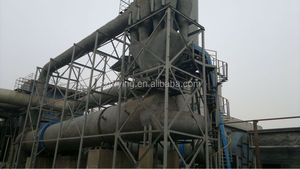
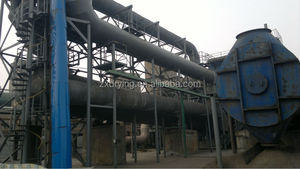

Nhiệt độ cao khí sưởi ấm Lò Quay lò sấy với động cơ tiết kiệm năng lượng để sản xuất chất xúc tác của nhà máy sấy
190.000,00 US$ - 200.000,00 US$
Đơn hàng tối thiểu: 1 Bộ
Vận chuyển mỗi chiếc: 5.000,00 US$







Gốm bắn phôi xử lý nhiệt Con lăn lò Con lăn lò liên tục nhiệt độ cao Đường Hầm Lò
30.000,00 US$ - 35.000,00 US$
Đơn hàng tối thiểu: 1 Bộ
Vận chuyển mỗi chiếc: 0,00 US$







Công Suất Cao Fired Brick Making Machine Rotary Tunnel Lò Gạch Lò
400.000,00 US$
Đơn hàng tối thiểu: 1 Bộ







Trung Quốc Đường Hầm Lò Gốm Gạch Clinker Bị Cháy Gạch Đỏ Hoàn Chỉnh Làm Dây Chuyền Sản Xuất Khí Than Bắn Lò Gạch Nhà Máy
252.000,00 US$ - 269.800,00 US$
Đơn hàng tối thiểu: 1 Bộ



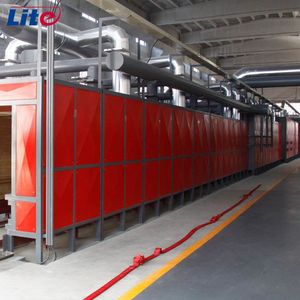


Đường hầm lò cho gốm/hầm lò phụ tùng thay thế trong Trung Quốc
50.000,00 US$ - 500.000,00 US$
Đơn hàng tối thiểu: 5 Bộ





1400C Trung Quốc sứ gốm lửa liên tục đường hầm Con lăn lò
12.500,00 US$ - 13.000,00 US$
Đơn hàng tối thiểu: 1 Bộ











Liên tục nhiệt độ cao Đường Hầm Lò gốm bắn phôi xử lý nhiệt Con lăn lò Con lăn lò
30.000,00 US$ - 35.000,00 US$
Đơn hàng tối thiểu: 1 Bộ
Vận chuyển mỗi chiếc: 0,00 US$



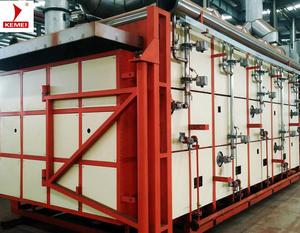








Lò Hầm Điện Sản Phẩm Mới 2020 Cung Cấp Miễn Phí 20 Phụ Tùng Lò Xử Lý Nhiệt Lò Kỹ Thuật Cho Loại N Tinh Thể
1.200,00 US$ - 6.800,00 US$
Đơn hàng tối thiểu: 1 Bộ






Chất lượng cao Tự động kiểm soát nhiệt độ nhỏ gốm/Gốm lò gốm đưa đón lò
650,00 US$ - 680,00 US$
Đơn hàng tối thiểu: 1 Bộ












Công Suất Hàng Năm 15 Triệu 30 Triệu Pcs Gạch Lửa Hầm Lò Trong Sri Lanka
100.000,00 US$ - 500.000,00 US$
Đơn hàng tối thiểu: 1 Bộ






JCY-Lò Nung Gốm Điện Tự Động Nhiệt Độ Cao Lò Nung Điện Cho Công Nghiệp
3.300,00 US$ - 3.500,00 US$
Đơn hàng tối thiểu: 1 Bộ











Nhiệt độ cao Pusher Tấm đường hầm lò Lò cho xử lý nhiệt của linh kiện điện tử
10.000,00 US$ - 70.000,00 US$
Đơn hàng tối thiểu: 1 Bộ












Công nghiệp Đường Hầm Lò băng tải sấy lò đường hầm Máy sấy hệ thống sưởi khô lò Đường Hầm Lò
3.180,00 US$ - 3.280,00 US$
Đơn hàng tối thiểu: 1 Bộ
Vận chuyển mỗi chiếc: 800,00 US$

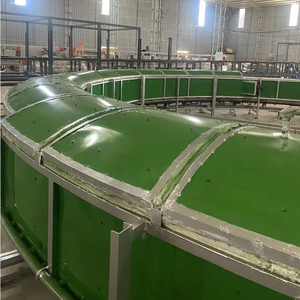

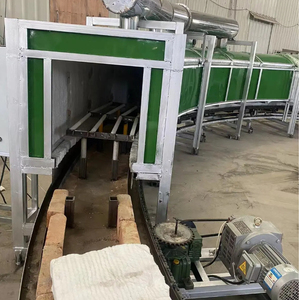


Nhà Máy Giá Công Nghệ Hiện Đại Cao Hiệu Quả Gốm Lò Đưa Đón Lò Cho Gốm Sứ Đường Hầm Lò Cho Đất Sét
99.000,00 US$ - 99.800,00 US$
Đơn hàng tối thiểu: 1 Cái






Máy Làm Gạch Đất Sét Cháy Dầu Nặng Than Diesel Công Nghệ Hiện Đại Lò Hầm
10.000,00 US$
Đơn hàng tối thiểu: 1 Bộ




Chất Lượng Đáng Tin Cậy 3*26.7M Công Nghiệp Hóa Chất Lò Hầm Quay Với ISO
60.000,00 US$
Đơn hàng tối thiểu: 1 Bộ












Lò Hầm Vật Liệu Sic Silicon Carbide Và Sio2 10 Sio2 Màu Đen Có Độ Tinh Khiết Cao 1550C
9,99 US$ - 29,99 US$
Đơn hàng tối thiểu: 4 Cái






300-1700c gốm xử lý nhiệt Bogie hearth/Đường Hầm Lò giá gốm thiêu kết đưa đón lò nhà sản xuất
Sẵn sàng vận chuyển
3.920,00 US$
Đơn hàng tối thiểu: 1 Bộ
Vận chuyển mỗi chiếc: 310,00 US$






Nhiệt độ cao sưởi ấm lò đưa đón lò gas cho gốm lò gas cho gốm
3.135,00 US$ - 3.325,00 US$
Đơn hàng tối thiểu: 1 Bộ

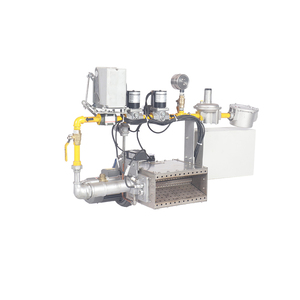

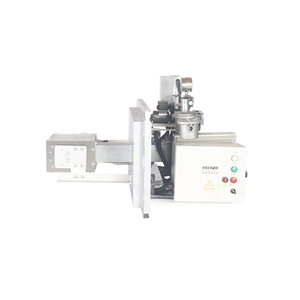
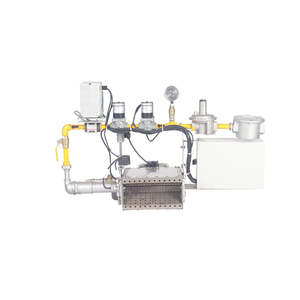






Nhiệt Xây Dựng Cách Nhiệt Sodium Silicate Lò Hầm Lò Gốm
100.000,00 US$ - 800.000,00 US$
Đơn hàng tối thiểu: 1 Bộ






Hot Bán IR Đường Hầm Lò Lò Để Bán Cho Tự Động Phun Sơn Máy
3.000,00 US$ - 16.000,00 US$
Đơn hàng tối thiểu: 1 Bộ






Nhà Máy Giá Tất Cả Các Sợi Xe Đẩy Xử Lý Nhiệt Lò Pusher Loại Đường Hầm Lò Lò
5.000,00 US$ - 10.000,00 US$
Đơn hàng tối thiểu: 1 Bộ






Nhà Máy Giá Tất Cả Sợi Xe Đẩy Xử Lý Nhiệt Lò Pusher Loại Đường Hầm Lò
7.000,00 US$ - 8.000,00 US$
Đơn hàng tối thiểu: 1 Bộ






Máy xây dựng lò Hầm Lò chân không công nghệ xây dựng lắp ráp thiết bị tiết kiệm thời gian
1.390,00 US$
Đơn hàng tối thiểu: 1 Bộ






Chất Lượng Cao Điện Gốm Gốm Lò Cho Bắn Gốm Sứ Cho Bán Điện Đất Sét Gạch Lò Chân Không Gỗ Khô
25.000,00 US$
Đơn hàng tối thiểu: 1 Bộ






Tự Động Đường Hầm Lò Điện Đất Sét Gạch Bắn Đường Hầm Lò
5.000,00 US$ - 15.000,00 US$
Đơn hàng tối thiểu: 1 Đơn vị






Gạch Đất Sét Đốt Lò Nướng Máy Gạch Nhà Máy Máy Sấy Lò Giá
100.000,00 US$ - 500.000,00 US$
Đơn hàng tối thiểu: 1 Bộ






KEMEI Chi Phí Tốt Nhất Hiệu Quả Bộ Đồ Ăn Đường Hầm Lò
450.000,00 US$ - 750.000,00 US$
Đơn hàng tối thiểu: 1 Bộ






JCY 2CBM HighTemperature Shuttle Furnace Clay Brick Tunnel Lò Để Đốt Gạch Tại Hội Thảo Và Trường Học
11.997,00 US$ - 12.628,00 US$
Đơn hàng tối thiểu: 1 Bộ


Xử Lý Nhiệt Lò Hầm Cho Gốm Cho Các Nhà Sản Xuất Trung Quốc
10.000,00 US$ - 50.000,00 US$
Đơn hàng tối thiểu: 1 Bộ
Các danh mục hàng đầu
Giới thiệu về đường hầm lò ở trung quốc
Nhiều loại. đường hầm lò ở trung quốc có sẵn cho nhiều loại dịch vụ sản xuất thực phẩm. Các nhà cung cấp tại Alibaba.com cung cấp các bộ phận thô, chưa cắt cũng như các sản phẩm đã được chế biến sẵn. Những cái này. đường hầm lò ở trung quốc nhằm mục đích sử dụng khi cung cấp cho nhà hàng hoặc cửa hàng bán thịt. Chúng có thể được sử dụng trong các món ăn khác nhau để phục vụ khách hàng. Những cái này. đường hầm lò ở trung quốc cũng có thể được chế biến thêm thành các loại nguyên liệu thực phẩm và sản phẩm thực phẩm khác.
Hầu hết. đường hầm lò ở trung quốc được đông lạnh để giữ cho nó luôn tươi và sẵn sàng sử dụng. Các giống khác được làm khô hoặc xử lý để loại bỏ nhu cầu rã đông sau này. Nhiều loại. đường hầm lò ở trung quốc được đóng gói chân không để giữ cho chúng không bị hỏng trong quá trình vận chuyển. Một số nhà cung cấp cung cấp các loại giống đã được xay sẵn để bạn tiện theo dõi. Một số người khác cung cấp. đường hầm lò ở trung quốc chẳng hạn như chân hoặc đuôi có thể được mài hoặc xử lý khi cần.
Các nhà cung cấp khác nhau của. đường hầm lò ở trung quốc cung cấp giá cả theo tấn hoặc tấn. Một số cung cấp bộ hoặc hộp có trọng lượng đã được chỉ định. Tìm kiếm trên Alibaba.com cho. đường hầm lò ở trung quốc ít đường và giàu dinh dưỡng. Nhiều nhà cung cấp có các lựa chọn để vận chuyển các mẫu nhỏ. Điều này cho phép bạn kiểm tra. đường hầm lò ở trung quốc để xem liệu chúng có đáp ứng nhu cầu của bạn hay không trước khi đặt hàng đầy đủ.
Mua sắm tại Alibaba.com để có. đường hầm lò ở trung quốc hoạt động tốt nhất cho sản xuất ẩm thực của bạn. Cho dù bạn cần toàn bộ hay một sản phẩm được làm từ nó, có rất nhiều tùy chọn để lựa chọn. Giữ cho doanh nghiệp của bạn được cung cấp để tăng năng suất.
Hầu hết. đường hầm lò ở trung quốc được đông lạnh để giữ cho nó luôn tươi và sẵn sàng sử dụng. Các giống khác được làm khô hoặc xử lý để loại bỏ nhu cầu rã đông sau này. Nhiều loại. đường hầm lò ở trung quốc được đóng gói chân không để giữ cho chúng không bị hỏng trong quá trình vận chuyển. Một số nhà cung cấp cung cấp các loại giống đã được xay sẵn để bạn tiện theo dõi. Một số người khác cung cấp. đường hầm lò ở trung quốc chẳng hạn như chân hoặc đuôi có thể được mài hoặc xử lý khi cần.
Các nhà cung cấp khác nhau của. đường hầm lò ở trung quốc cung cấp giá cả theo tấn hoặc tấn. Một số cung cấp bộ hoặc hộp có trọng lượng đã được chỉ định. Tìm kiếm trên Alibaba.com cho. đường hầm lò ở trung quốc ít đường và giàu dinh dưỡng. Nhiều nhà cung cấp có các lựa chọn để vận chuyển các mẫu nhỏ. Điều này cho phép bạn kiểm tra. đường hầm lò ở trung quốc để xem liệu chúng có đáp ứng nhu cầu của bạn hay không trước khi đặt hàng đầy đủ.
Mua sắm tại Alibaba.com để có. đường hầm lò ở trung quốc hoạt động tốt nhất cho sản xuất ẩm thực của bạn. Cho dù bạn cần toàn bộ hay một sản phẩm được làm từ nó, có rất nhiều tùy chọn để lựa chọn. Giữ cho doanh nghiệp của bạn được cung cấp để tăng năng suất.






























